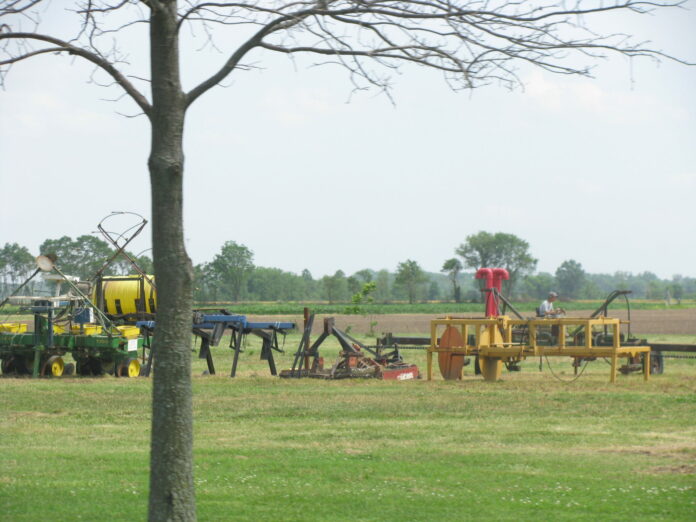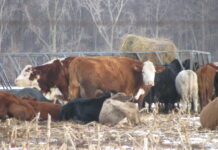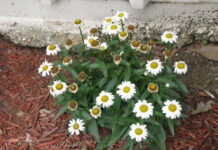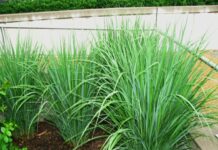Photo credit: DiasporaEngager (www.DiasporaEngager.com).
| Total of people aged 55 and over | 34.3 | 7.4 | 50.0 | 7.8 |
|---|---|---|---|---|
| 55-64 yrs | 25.7 | 5.5 | 60.5 | 7.2 |
| 65-74 yrs | 31.2 | 6.8 | 52.9 | 9.1 |
| 75 and over | 44.8 | 9.7 | 38.1 | 7.1 |
| ¹⁾ In people experiencing some difficulty with IADL activities | ||||
The percentage of people who say they have great difficulty with at least one of the household activities listed in the survey, or who cannot do any of them, is highest among people aged over 75 (34 percent). This age group experiences difficulty with Instrumental Activities of Daily Living (IADL). More people aged 75 and over (37 percent) also experience some difficulty with these activities compared with people aged 55 to 64 (24 percent).
Half of people over 55 received no help and needed no help
People aged 55 and over living independently who indicated experiencing some difficulty with at least one of the IADL activities were asked whether they were actually receiving help with these activities. If the answer was yes, they were then asked if they wanted more help. If they answered no, they were asked whether they would like any help. Eighty-four percent said they were receiving enough help; 34 percent were receiving help and said they did not need any more help, while 50 percent were receiving no help and did not need any help. Over 7 percent indicated they were receiving help and would like additional help, while nearly 8 percent said they were not receiving help but would like to. The share of people receiving help was the highest among people aged 75 and over. Moreover, the share of those over 75 who wanted more help was also higher than among people aged 55 to 64.
| Total of people aged 55 and over | 34.3 | 7.4 | 50.0 | 7.8 |
|---|---|---|---|---|
| 55-64 yrs | 25.7 | 5.5 | 60.5 | 7.2 |
| 65-74 yrs | 31.2 | 6.8 | 52.9 | 9.1 |
| 75 and over | 44.8 | 9.7 | 38.1 | 7.1 |
| ¹⁾ In people with some difficulty with IADL activities | ||||
Particularly those living alone want more help
The share of people aged 55 and over who had at least some difficulty with one of the IADL activities is higher among people living alone (67 percent) than among those living with a partner (45 percent). Even when taking into account that the people living alone in the survey are, on average, somewhat older than those cohabiting, the share of people experiencing some difficulty with any of the IADL activities is higher among those living alone.
Among those aged over 55, more people living alone want more help (13 percent) than those living with a partner. Furthermore, 11 percent said they did not receive any help but did want help. Among people of the same age who live with a partner, the share was 4 percent and 6 percent, respectively. Across all age groups, people living alone want to receive more help than they are currently receiving, while in the age groups up to 75, there are more people living alone who would like to receive help but are not currently receiving it.
| Total of people aged 55 and over | ||||
|---|---|---|---|---|
| Living alone | 37.1 | 13.1 | 38.5 | 10.8 |
| Partner in couple | 32.2 | 3.8 | 57.9 | 5.6 |
| 55-64 yrs | ||||
| Living alone | 22.0 | 10.9 | 53.2 | 12.1 |
| Partner in couple | 25.2 | 2.4 | 67.6 | 4.0 |
| 65-74 yrs | ||||
| Living alone | 25.0 | 12.6 | 45.1 | 17.3 |
| Partner in couple | 34.6 | 3.9 | 56.6 | 4.9 |
| 75 yrs and over | ||||
| Living alone | 53.4 | 14.8 | 25.7 | 6.1 |
| Partner in couple | 36.6 | 5.2 | 49.3 | 8.2 |
| ¹⁾ In people experiencing some difficulty with IADL activities | ||||
More people say they do not need help
The share of people aged 55 and over who experience some difficulty with an IADL activity has hardly changed compared to 2014. Of those who reported experiencing at least some difficulty with one of the IADL activities, the share of people receiving help in 2023 was lower than in 2014. The share of people who want to receive more help is also slightly lower. The share of people not receiving help and not needing help has increased compared to 2014. The share of people not receiving help but indicating that they want it, has remained unchanged.
| 2014 | 47.9 | 10.5 | 35.5 | 6.0 |
|---|---|---|---|---|
| 2015 | 42.1 | 9.2 | 41.5 | 7.0 |
| 2016 | 42.4 | 9.9 | 40.6 | 6.9 |
| 2017 | 41.0 | 9.0 | 42.9 | 6.9 |
| 2018 | 40.2 | 9.3 | 43.9 | 6.6 |
| 2019 | 42.9 | 7.9 | 44.0 | 5.1 |
| 2020 | 41.8 | 7.3 | 43.9 | 6.8 |
| 2021 | 38.9 | 6.9 | 48.0 | 6.2 |
| 2022 | 36.3 | 8.8 | 47.8 | 6.9 |
| 2023 | 34.3 | 7.4 | 50.0 | 7.8 |
| ¹⁾ In people experiencing some difficulty with IADL activities | ||||
Source of original article: Statistics Netherlands (CBS) (www.cbs.nl).
The content of this article does not necessarily reflect the views or opinion of Global Diaspora News (www.GlobalDiasporaNews.com).
To submit your press release: (https://www.GlobalDiasporaNews.com/pr).
To advertise on Global Diaspora News: (www.GlobalDiasporaNews.com/ads).
Sign up to Global Diaspora News newsletter (https://www.GlobalDiasporaNews.com/newsletter/) to start receiving updates and opportunities directly in your email inbox for free.


































